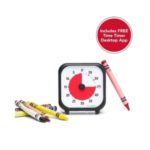Ten Tips for Organizing Your Kids Bedroom
Ten Tips for Organizing Your Kids Bedroom
You want your kids to be organized. But you need it to be easy and fast and fun! It’s important for children to manage their own things. By giving them responsibility for their toys, clothes, and rooms you teach them essential life skills. You can use these tips to make your life easier and your kids more organized.
Here are ten tips to organize your kid’s bedroom.
- Every child should have their own hamper and a wastebasket.
- Provide a place for homework by having a workspace with good lighting, supplies, and storage for books.
- Provide each child with a place for special things they want to keep, like a memory box.
- Only keep clothing that fits right now hung in the closet and housed in the drawers.
- Separate types of clothes into drawers for easy put-away.
- Label and call those drawers by name to build communication.
- Place a donation or hand-me-down box on the floor of the closet for the clothing that no longer fits.
- Hang clothes at their level so they can reach them or hang hooks for easier hanging.
- Cull kids’ clothing (and toys) regularly.
- Build a sense of ownership by giving children their own space and the responsibility to maintain it.
You want your kids to be organized. But you need it to be easy and fast and fun! Share on X
 The Time Timer
The Time Timer
Give the Gift of (Visual) Time
Whether your children are learning at home in the classroom or both, the time timer products can help ensure they have the tools to succeed. Discover how you can reduce resistance to routines and increase time management skills.
Unlike traditional timers that fail to make the abstract concept of time concrete, the award-winning Time Timer’s visual depiction of “time remaining” provides stress-free time management at work, school, and home to make every moment count.
Special needs individuals: There’s a world of difference between looking at a clock and being able to say that it’s 3 o’clock and understanding “how long” 5 minutes is. For those who learn differently, this type of abstract thinking is even more difficult and often creates a high level of anxiety.
Education: Teachers around the world have discovered the power of the award-winning Time Timer to transform stressful transition periods, reduce resistance to routines and increase their ability to manage their classrooms.
Home: You know what a difference the Time Timer makes in the classroom, but what about at home? Discover the power of the award-winning Time Timer to transform never-ending meals, stressful transition periods, and resistance to routines.
Work: At your desk, in the boardroom, or on the wall of the conference hall, the Time Timer increases productivity by creating a sense of urgency and keeping everyone on track.
The Time Timer comes in several price points.
Subscribe by email
Enter your email address to subscribe to this blog and receive notifications of new posts by email.
Janet Schiesl

Janet has been organizing since 2005. She is a Certified Professional Organizer and the owner of Basic Organization.
She loves using her background as a space planner to challenge her clients to look at their space differently. She leads the team in large projects and works one-on-one with clients to help the process move quickly and comfortably. Call her crazy, but she loves to work with paper, to purge what is not needed and to create filing systems that work for each individual client.
Janet is a Past Board Member of the National Association of Productivity and Organizing Professionals and a Past President of the Washington DC Chapter of NAPO were she has been named Organizer of the Year and Volunteer of the Year.

Janet Schiesl
Janet has been organizing since 2005. She is a Certified Professional Organizer and the owner of Basic Organization.
She loves using her background as a space planner to challenge her clients to look at their space differently. She leads the team in large projects and works one-on-one with clients to help the process move quickly and comfortably. Call her crazy, but she loves to work with paper, to purge what is not needed and to create filing systems that work for each individual client.
Janet is a Past Board Member of the National Association of Productivity and Organizing Professionals and a Past President of the Washington DC Chapter of NAPO were she has been named Organizer of the Year and Volunteer of the Year.

 The Time Timer
The Time Timer
I love ALL of these tips! One additional one is to start kids young and organize not for but WITH them. They might not have the stamina to work with you for more than 10-15 minutes at a time. But teaching them the skills early can have a positive influence on them going forward. Organizing skills are transferrable to all aspects in life- school, home, work, relationships, and entertaining.
Organizing ‘with’ instead of ‘for’ kids is such a great distinction. It sets them up for success down the line.
That is a spot-on Top 10 list! Simple, but important. I especially love the idea of calling the various drawers by what is stored inside. I honestly think I’m going to try that with a client I have this week. What we “name” things has power in helping us to remember.
You’ll have to let me know how it goes with your client. I hope that naming them helps them out.
These are all great tips. Parents can save themselves a lot of grief by following these steps, and it will help train kids to be more in control of their wardrobes as they get older.
An addendum to #s 4 OR 8 is that you can store clothes that don’t fit yet, or clothes that you don’t want kids to wear except for special occasions, up on the higher rod where they can’t reach, perhaps flush to the right or left of the closet and “hidden” by something boring like a table cloth. Kids won’t explore their own clothes closet for other items, but if you’re short on alternative space, the top rod, all the way to one side is an easy place to stage “party” clothes or the next size up.
Good idea for your addendum, then they can’t get into the extras and create more chaos.